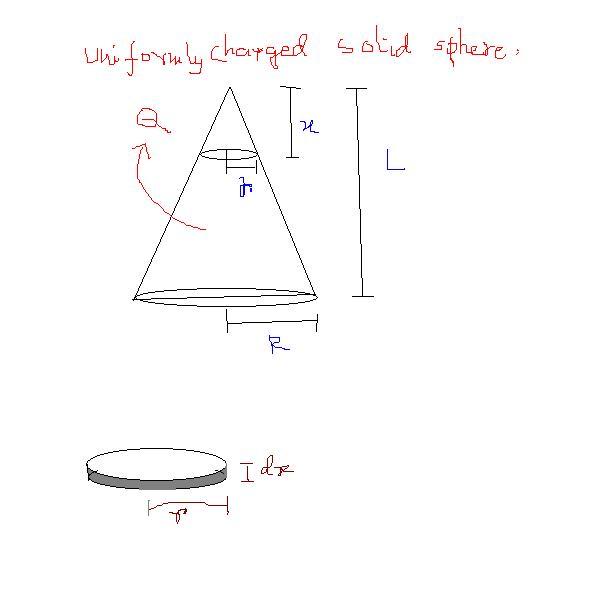[6]
how do we calculate the flux thru a conical surface????
-
UP 0 DOWN 0 1 3

3 Answers
skygirl
·2009-01-10 08:16:55
electric flux i suppose //

tanθ = R/L
charge through one slice of disc = dq= 3Q/L3 x2dx
since it is an uniformly charged solid cone,
the field due to the charge will be symmetrical about the central line .
and, the horizontal feilds will cancel each other, leaving only the vertical
component.
so lets take a disk and find its flux.
dφ = q/ ε0 = 3Q/L3ε0 x2dx
=> φ = ∫ 3Q/L3ε0 x2dx (from x=0 to L)
=> φ = Q/ε0.
(this is the most weird result i had expected.)